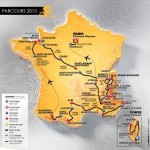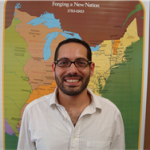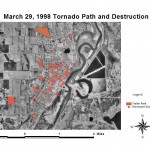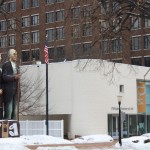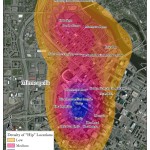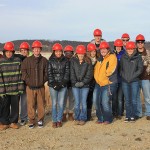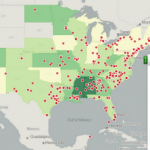Archive for Mark Bjelland
I grew up in South Minneapolis, a great place for a budding geographer. We lived a half mile from the Mississippi River bluffs where we would stage our outdoor adventures or just sit and watch the barges go by. And we had a bus line that took us straight downtown for our urban explorations.
I've lived in Seattle, Vancouver, British Columbia, Victoria, and the United Kingdom. But I love Minnesota--from the prairies to the northern boreal forest, and from the quaint small towns to the bustling Twin Cities metropolis.
Lauren Anderson ’13 Accepts Peace Corps Assignment to Thailand
While a geography major at Gustavus Adolphus College, Lauren Anderson showed str0ng interest in issues of international development. Her passions fit with the Gustavus core values of service, diversity, and justice. Now she has been accepted into the Peace Corps and has been invited to am assignment as a teacher/collaborator and community facilitator in Thailand. […]
The Tour de France
The route of this amazing bike race always confused me. Here’s a map to help you follow the stages of the race. I found this at: http://mapsontheweb.tumblr.com/
Joaquín Villanueva to Join Gustavus Geography Faculty
Dr. Joaquín Villanueva will join the Gustavus Geography Department in fall 2013 as a visiting assistant professor. Joaquín Villanueva comes to us from Fairleigh Dickinson University in New Jersey where he served as a lecturer in geography. Joaquín Villanueva obtained his Ph.D. in geography at Syracuse University, working under Dr. Don Mitchell. Dr. Villanueva’s doctoral […]
An Islamic Google Earth?
The U.K. Guardian newspaper recently reported that Iran’s minister for communication and technology announced that their country will release an Islamic version of Google Earth by August 2013. Iran has long maintained that Google Earth is a tool of western spy agencies. The concept of an Islamic Google Earth contrasts with the common view of […]
Ice Out on Northern Minnesota Lakes
The ice went out in early May on many northern Minnesota lakes. For some lakes it was the latest ice-out date on record. NASA’s Earth Observatory captured fantastic images of the change between May 12 and May 16 with their MODIS satellite instrument. Read more here
15 Years Ago Today: The Saint Peter Tornado
A F-3 tornado struck on March 29, 1998, killing a young boy and destroying over two hundred homes plus two historic schools, two historic churches, Gustavus’ oldest dormitory, and thousands of trees. Remarkably, the tornado spared the town’s three trailer parks, lessening the toll. Below is a map created in MapInfo by Gustavus geography students […]
The Midwest’s Identity Crisis
A provocative article in MinnPost points out the Midwest’s feelings of inferiority relative to the East Coast and West Coast. Frank Bures describes the many architectural and literary treasures of the Midwest and notes that back a few generations, there wasn’t the same feeling of inferiority. Mark Twain, Cass Gilbert, Grant Wood, Frank Lloyd Wright […]
The Geographic Center of Hipness
Geography major Jory Birkeland did a class project exploring the geographic center of hipness for the Twin Cities. The theoretical basis for his work is found in the writings of economic geographer/urban planner Richard Florida who argues that the future of cities lies in attracting creative workers. Creative class workers are the core of the […]
Students Visit Local Frac Sand Mine
Human geography students donned safety goggles and hardhats to visit the Unimin mining operation in Kasota. The trip offered students a chance to witness mining in action and see the interplay of global forces, local geomorphology, and textbook economic geography locational considerations. Unimin is a Belgium-based company with mines on all seven continents. Their Kasota, […]
Mapping Racist Tweets
RacisThe geography über nerds at the Floating Sheep collective have made another fascinating map. They mapped geo-tagged racist tweets that emerged after President Barack Obama’s re-election and computed location quotients based on the total state volume of tweets. One weakness of the map is that the sample size was small since they only sampled 0.05% of […]

